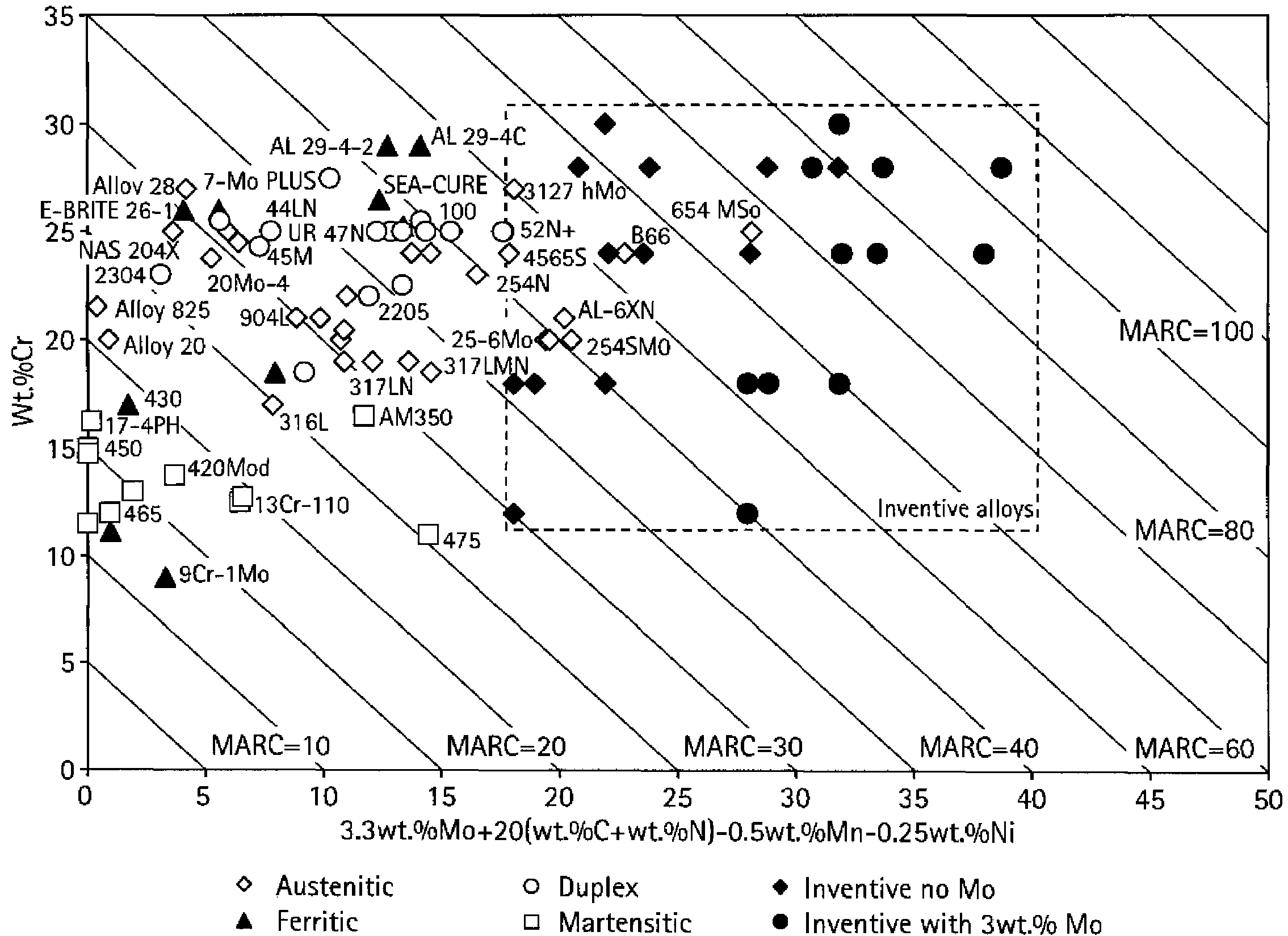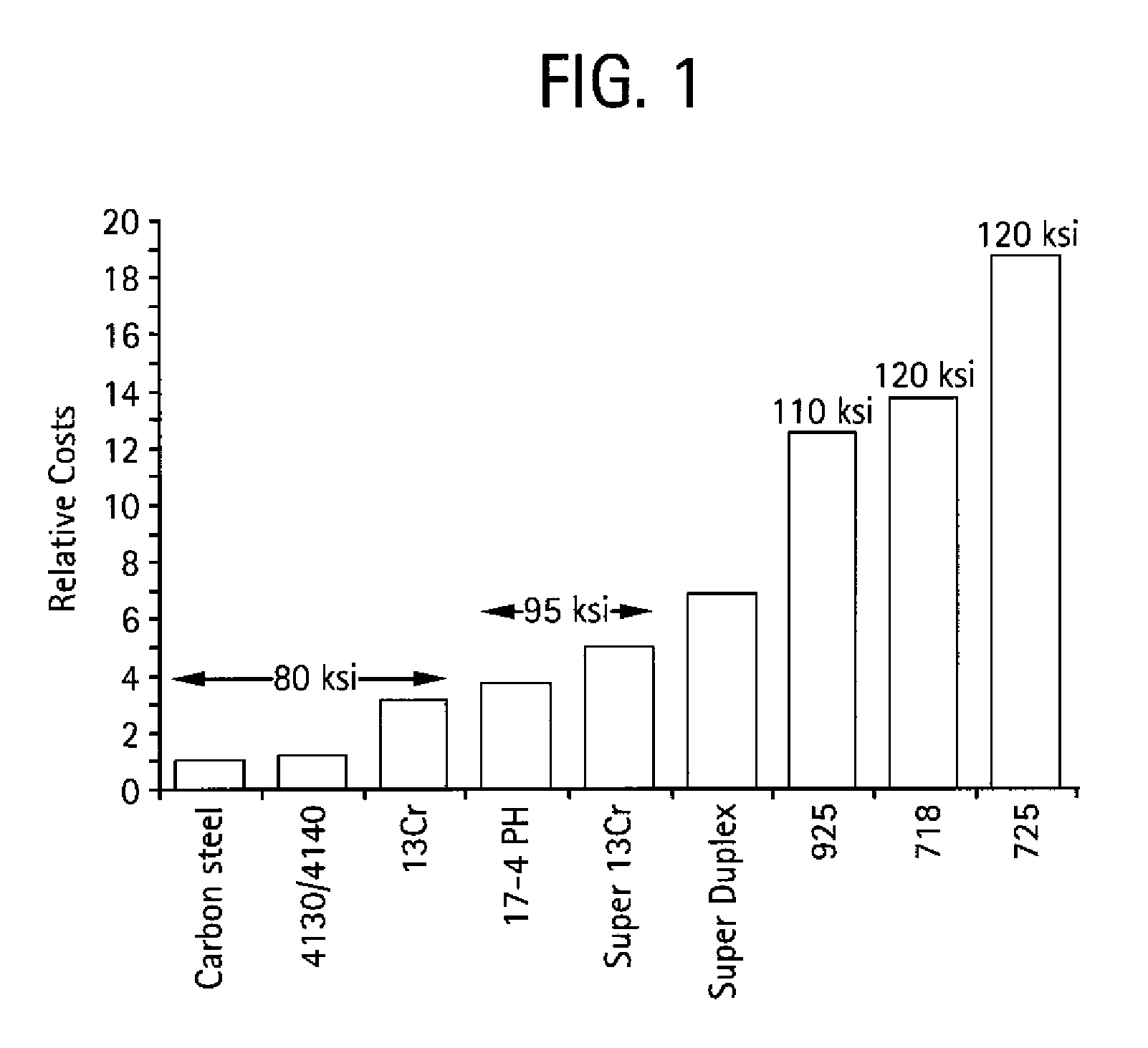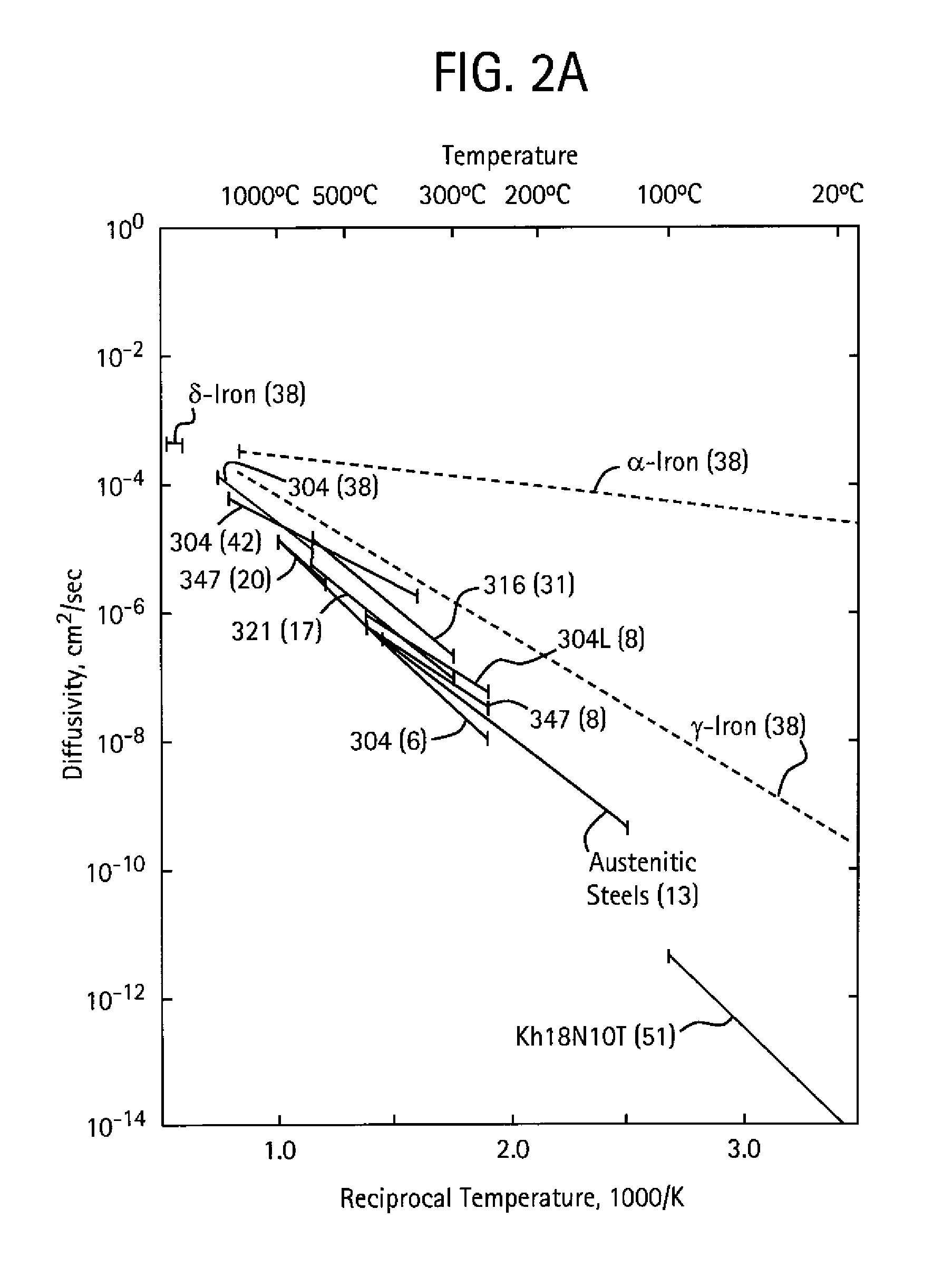Interstitially strengthened high carbon and high nitrogen austenitic alloys, oilfield apparatus comprising same, and methods of making and using same
a technology of austenitic alloys and interstitial strengthening, which is applied in the field of ferrous alloys, can solve the problems of reducing the overall performance of the alloy in corrosive environments, corrosion resistance, and essentially commercially available high-nitrogen steels, and achieves high strength, low raw material cost, and high resistance in corrosive environments
- Summary
- Abstract
- Description
- Claims
- Application Information
AI Technical Summary
Benefits of technology
Problems solved by technology
Method used
Image
Examples
Embodiment Construction
[0054]In the following description, numerous details are set forth to provide an understanding of the present invention. However, it will be understood by those skilled in the art that the present invention may be practiced without these details and that numerous variations or modifications from the described embodiments may be possible.
[0055]Described herein are inventive ferrous alloy compositions, shaped articles of manufacture (apparatus) employing one or more of the inventive ferrous alloys, and methods of making and using the apparatus, particularly as oilfield elements. Oilfield applications may include exploration, drilling, and production activities including producing water wherein oil or gaseous hydrocarbons are or were expected. As used herein the term “oilfield” includes land based (surface and sub-surface) and sub-seabed applications, and in certain instances seawater applications, such as when exploration, drilling, or production equipment is deployed through a water ...
PUM
| Property | Measurement | Unit |
|---|---|---|
| temperature | aaaaa | aaaaa |
| pressure | aaaaa | aaaaa |
| temperature | aaaaa | aaaaa |
Abstract
Description
Claims
Application Information
 Login to View More
Login to View More - R&D
- Intellectual Property
- Life Sciences
- Materials
- Tech Scout
- Unparalleled Data Quality
- Higher Quality Content
- 60% Fewer Hallucinations
Browse by: Latest US Patents, China's latest patents, Technical Efficacy Thesaurus, Application Domain, Technology Topic, Popular Technical Reports.
© 2025 PatSnap. All rights reserved.Legal|Privacy policy|Modern Slavery Act Transparency Statement|Sitemap|About US| Contact US: help@patsnap.com



